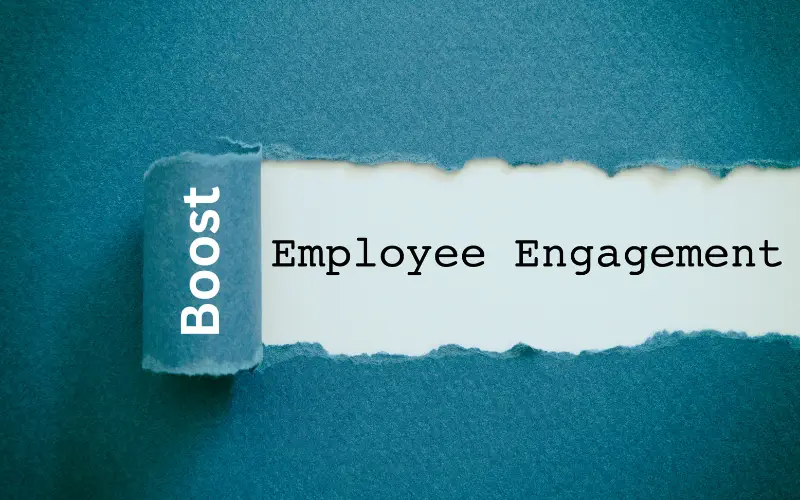Employee engagement is one of the most important factors that contribute to the overall success and culture of a company. Engaged employees are more motivated, productive, and committed to their roles, which ultimately drives the business forward. For many years, organizations have relied on traditional methods like team-building exercises, performance bonuses, and recognition programs to foster engagement. But as workplaces evolve—especially with more people working remotely or in hybrid models—companies are turning to a new, innovative way to keep employees connected and motivated: virtual challenges and games.
In an age where so much of our work life happens online, it only makes sense that companies would bring elements of play and competition into the virtual space to engage their teams. Virtual challenges and games are a fun, interactive way to bring employees together, no matter where they are, to encourage healthy competition, teamwork, and even wellness—all while keeping spirits high and productivity flowing.
Let’s explore how virtual challenges and games have become a popular and effective way to boost employee engagement, especially in today’s digital-first work culture.
Why Virtual Challenges and Games Matter
At its core, employee engagement is about creating an emotional connection between employees and their work, the company’s values, and their colleagues. Engaged employees are more than just workers—they’re people who feel invested in the company’s mission and are motivated to contribute to its success. And that’s where virtual challenges and games come in.
Rather than relying solely on traditional methods like performance reviews or one-time team-building events, virtual challenges offer a way to keep employees engaged over time. These activities are designed to be fun, but they also have a deeper purpose. They promote personal connections, encourage collaboration, and give employees a sense of achievement—all of which are key to fostering a motivated and loyal workforce.
How Virtual Challenges and Games Foster Engagement
1. Building Teamwork and Collaboration
In many companies, especially those with remote or hybrid teams, it’s easy for employees to feel isolated or disconnected. Virtual challenges and games can help break down those barriers by encouraging collaboration and teamwork. Many of these activities require employees to come together to solve problems, complete tasks, or reach certain milestones—often under a time limit, which adds a sense of urgency and excitement.
Think about virtual escape rooms, for example. Teams have to solve puzzles and challenges to “escape” from a virtual room before time runs out. It might sound simple, but these kinds of games demand strong communication, creative problem-solving, and a bit of strategic thinking. The result? Employees get a chance to bond while working toward a common goal, helping them develop stronger relationships that carry over to their daily work.
Even something as simple as a trivia competition can be a great team-building exercise. It doesn’t matter if you’re answering questions about the company’s history or pop culture—what matters is that employees are connecting with one another in a fun, low-pressure environment. These moments of collaboration create a sense of belonging and help build trust, both of which are essential for long-term engagement.
2. Injecting a Healthy Dose of Competition
A little bit of friendly competition can go a long way when it comes to motivation. Many virtual challenges tap into employees’ natural desire to excel and succeed. Whether it’s a fitness challenge, a skills competition, or even a leaderboard for completing certain tasks, having a competitive element makes the experience more exciting and rewarding.
For example, companies have introduced step challenges, where employees track their steps or other physical activity over the course of a month. It’s a great way to get people moving while also creating a little bit of competition. Employees can challenge each other to hit daily or weekly goals, and the chance to win a prize or recognition keeps everyone engaged. Another fun example is the blank candy bracket by Motivosity, where employees compete in a bracket-style competition, voting for their favorite candy, which adds a playful, lighthearted element to the workplace while also fostering a sense of camaraderie.
Of course, it’s important that this competition stays positive and doesn’t become overly intense or exclusionary. The point is not to create tension, but rather to inspire employees to push themselves a little harder, whether that’s in a fitness challenge, learning new skills, or hitting work-related goals. Recognizing achievements, even small ones, keeps people motivated to continue.
3. Supporting Employee Wellbeing
Engagement is not just about productivity—it’s also about employees feeling happy, balanced, and healthy. In fact, employee wellbeing has become an essential part of engagement in recent years, as businesses have realized that mental and physical health directly impact performance and retention. Virtual challenges focused on wellbeing—like meditation challenges, hydration goals, or mindfulness activities—are a great way to support employees’ health while also keeping them engaged.
For example, some companies set up “wellness challenges” where employees track their daily steps, water intake, or hours of sleep. They can earn points or rewards for hitting milestones. These challenges not only promote better physical health but also encourage employees to take regular breaks, disconnect, and recharge—something that can easily be overlooked in a remote work environment.
Since these activities are often gamified, they make wellness feel more fun and less like a chore. Whether it’s getting active or practicing mindfulness, employees are more likely to participate when the experience feels engaging and rewarding, rather than just another item on their to-do list.
4. Recognition and Reward
We all know that recognition is a powerful tool for engagement. Virtual challenges offer a unique way to reward employees for their hard work and achievements, and they can do so in a fun, interactive way. Leaderboards, badges, or even virtual “trophies” for completing certain challenges help recognize individual and team accomplishments.
For example, after completing a virtual fitness challenge or a skills-based game, employees could be given digital badges or certificates. Some companies also create “champions” of the month based on performance in a challenge, which is shared in a company-wide newsletter or meeting. These small moments of recognition go a long way in making employees feel valued and appreciated.
What’s great about virtual games is that they allow companies to recognize both individual accomplishments and team successes. This creates a well-rounded culture of recognition, where everyone has the chance to shine and be celebrated.
5. Encouraging Professional Growth
In addition to being fun, virtual challenges can also serve as a way for employees to learn and grow. Many companies have created games and challenges that help employees build skills or develop new ones. Whether it’s completing training modules, mastering new software, or improving communication skills, gamifying the learning process makes it feel less like a burden and more like an opportunity.
For instance, companies may host a “hackathon” or coding challenge, where employees work together (or individually) to solve problems and come up with innovative solutions. These challenges can help employees grow professionally while also contributing to the company’s overall goals. By making learning fun and interactive, employees are more likely to engage with training programs and develop the skills that benefit both them and the business.
Real-World Examples
Here are a few examples of virtual challenges that have worked for companies across various industries:
- Virtual Escape Rooms: Great for team-building and problem-solving, these encourage employees to work together under pressure.
Step Challenges: Encourages physical activity, with employees tracking their steps or other workouts, and competing for rewards.
Trivia Games: These can be themed around company culture, products, or general knowledge, promoting learning in a fun way.
Fitness or Wellness Challenges: Employees track healthy behaviors, earning points or prizes for completing daily goals like meditation or drinking enough water.
Skill Competitions: Teams or individuals compete in games that test their skills—like coding challenges, design contests, or sales pitch competitions.
Conclusion: The Power of Play in Employee Engagement
Virtual challenges and games are more than just a passing trend—they’ve become an essential tool in fostering employee engagement, especially in remote and hybrid work environments. By encouraging teamwork, healthy competition, recognition, and professional growth, these activities offer a dynamic way to keep employees motivated, connected, and happy.
Incorporating fun and interactive elements into the workday doesn’t just improve engagement—it also builds a positive company culture where employees feel valued, supported, and excited to contribute. As businesses continue to navigate the complexities of remote and hybrid work, virtual challenges and games will undoubtedly play a key role in shaping the future of employee engagement.




